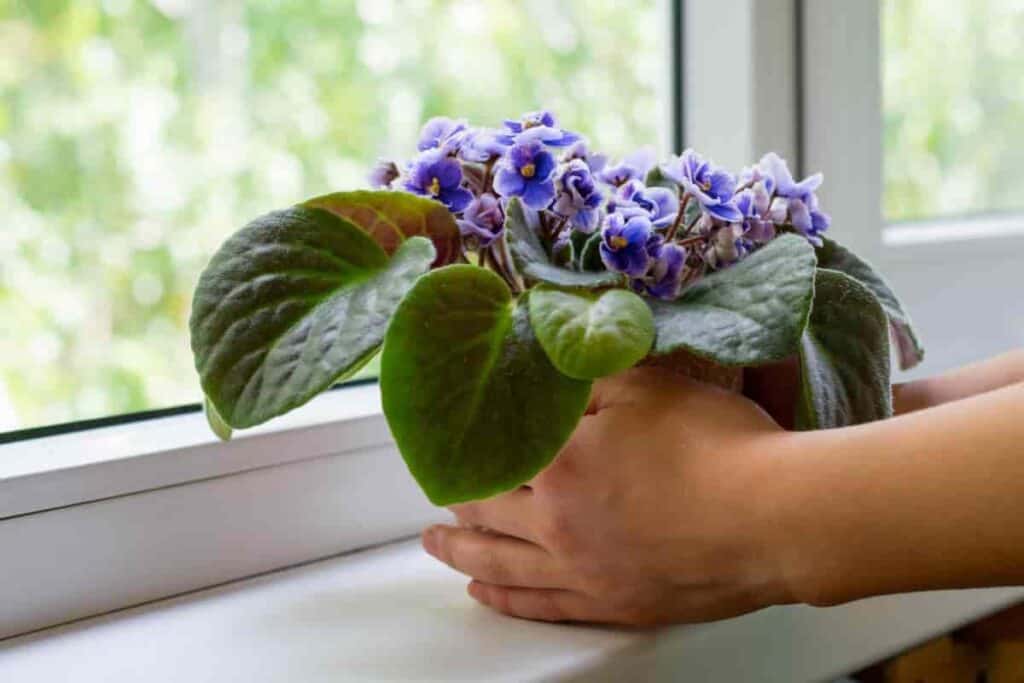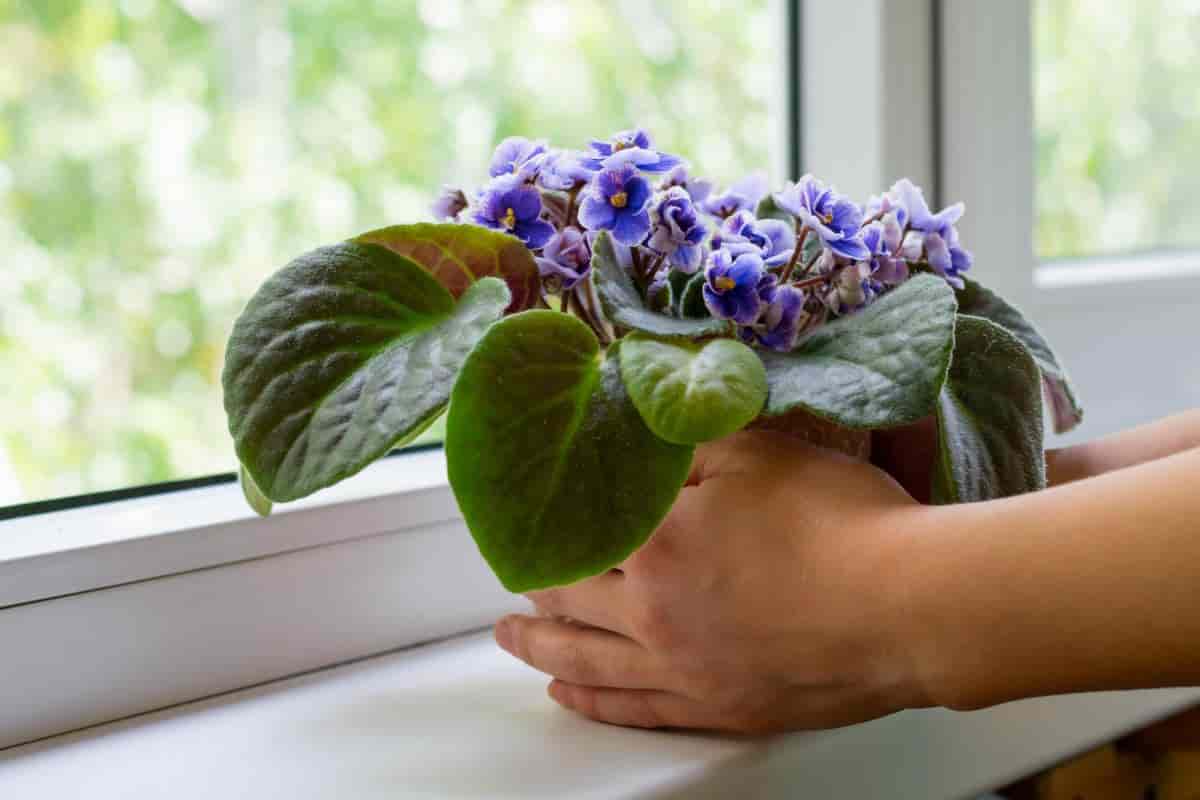All across our country Gesneriads are making big news. You know the best-known member of the gesneriad family – it’s the runaway best-seller African violet, properly termed the saintpaulia. The next most popular is a handsome, velvety-leaved plant which has satiny flowers in an endless array of colors and combinations the gloxinia.

These two gesneriads are representative of a giant plant family of handsome, often fuzzy-leaved plants with wheel-shaped, tubular, or bell-shaped flowers. The majority of these plants come from the tropics. Their needs can be met in most indoor gardens.
Gesneriads Do Best With Humidity
Perhaps the most difficult of these to meet is their requirement of 40 to 60 percent humidity moisture in the air around the plants. Some gesneriads will grow in the shade of a north window, in semi-sun of east or west windows, or the full sun of a south window – but ALL of them require at least 35 percent humidity in the air.
Making up for a lack of humidity isn’t impossible, or difficult to do. The most direct solution to the problem lies in the fact that the more plants you grow, the more humidity you’ll have. You’ll be more successful if you set your plant pots in trays of moist vermiculite.
Once you’ve met the requirements of humidity, everything else falls into line. Temperatures shouldn’t go below 62 degrees at night. They can rise five to 15 degrees above this temperature during the day. Gesneriads like rich, spongy, and humus soil. It must drain well for gesneriads like moist soil, but it should not be a drippy, soggy place for their roots.
Gesneriads are easily propagated, either by division, stem, or leaf cuttings. Seeds may be planted at any time, gentle bottom heat can be provided (the top of your oil burner, refrigerator, or another warm spot).
I hope that you’ll try your hand at growing the gesneriads described in the following text. All are suited to the window sill, fluorescent light, and home greenhouse culture. The 16 genera most commonly grown at present are described.
There are at least 65 other genera known. Plant-hunting expeditions and hybridizers are constantly expanding the countless number of species, hybrids, and mutations of gesneriads.
Gesneriads are available through the mail from collectors, and occasionally at local flower shops. Because they are plants of the tropics, they are normally difficult to ship long distances during late fall and winter. If you would like a source sheet of gesneriads, please enclose a stamped envelope with your request to me.
Tropical Plants
Achimenes grow from scaly rhizomes shaped somewhat like a tiny pine cone. They are most useful as summer porch-box plants. Order and plant six to a five- or six-inch pot from January to April. Start with gentle bottom heat and keep nicely moist.
When two or three inches tall, pinch out the tips to induce bushiness. Blossoms come in July until frost. Store the tubercles in the soil in which they grew. Keep barely moist and cool (50-55 degrees) until late winter.
Then clean off the old soil and replant. Best suited to a protected, semi-shady spot outdoors in warm weather. They will grow in the light of an east or west window, and they are unrivaled for providing summer color in the greenhouse.
Aeschynanthus
Aeschynanthus is a hanging-basket plant. It comes from the Asiatic tropics and likes a warm, sunny window. The flowers come from a brown calyx (spring, summer, fall). When the young, fuzzy red buds first show, they have the appearance of a small lipstick, hence the plant’s common name of lipstick plant.
This plant is epiphytic and most easily grown in pure sphagnum moss with regular liquid fertilizer feedings. Don’t allow plants to dry out.
Alloplectus
Alloplectus is a handsome foliage plant. Requires warmth and high humidity, and is suited to fluorescent light culture, or an east or west window (semi-sun). A. vittatus from E. Peru is perhaps the easiest to grow indoors.
Chirita
Chirita is a fibrous-rooted Malayan gesneria. It has succulent, almost translucent apple-green stems, heart-shaped fuzzy leaves, and delicate blue, pouchy-slipper flowers. Keep moist at all times and grow in an east or northeast window. Usually grown from seeds as an annual; plant at any time when gentle bottom heat is available.
Codonanthe
Codonanthe is a small trailer from Costa Rica, Panama, and South America. Its leaves are stiff and waxy with red-spotted undersides and slipper-shaped poached flowers. Grows well in a porous soil mixture of peat moss, charcoal, and sponge rock.
Columnas
Columnas are fibrous-rooted epiphytes from Central and South America. They have trailing stems. Spectacular flowers come in the winter and spring. Columnea Alleni, gloriosa, and hirta have small, fuzzy leaves. C. arguta and Banksi have shiny, glossy leaves. C. tulae `Flava’ has bright yellow flowers almost all around the year. Don’t miss the columnas!
Episcias
Episcias take their place among the most decorative of all house plants. They have fuzzy, often velvety leaves with stolons or “runners” that cascade from the main plant. Brilliant flowers of flame red, lavender, or yellow come in the spring and summer when temperatures soar, sunlight becomes more intense and the humidity index rises.
The foliage is attractive most of the year. Episcias will lose their leaves at temperatures below 55. The best-looking plants result if tip cuttings, or stolons, are clipped off and rooted at least once a year, and the old plant is discarded.
East, northeast, west, or light north windows suit them. They respond to biweekly feedings of liquid fertilizer, such as fish emulsion, from January to September.
Gloxinia
Gloxinia is the name given to plants that result from crossing two other gesneriads, the gloxinia, and the rechsteineria. Gloxinias is considered by many to be the most suitable of the entire Gesneriad family for house culture. They have trumpet-shaped flowers, usually in some shade of pink. These come in great profusion for months on end when the plants are well-grown.
Gloxinia grows from a fleshy tuber and may be brought into flower at any time of the year when it is provided with enough light, warmth, and humidity. Gloxinias require almost full sun in the winter months to make the foliage grow symmetrical and flat as it should.
Gloxinia tubers planted in October will begin to bloom in early winter. Young seedlings, shipped in 21,4-inch pots will bloom from mid-winter into spring. For the ultimate in plant enjoyment, grow a packet of hybrid gloxinia seeds!
Just for the record, the plants we call gloxinias are Sinningia. The true gloxinia grows from a scaly rhizome, attains a height of 24” inches, and produces blue, canterbury-bell-like flowers.
Hypocyrta
Hypocyrta is an epiphyte from the humid tropics of Central America. The small, hairy leaves grow on trailing, woody stems. The red, edged yellow, pouch-like flowers have a most unusual shape. Requires winter sun, and summer shade.
Must have warmth and moist air. Pot several togetheróthey’re small plants. Reduce water in the fall when hypocyrta begins to lose its leaves for a dormant period that lasts until January or February.
Kohleria
Kohleria grows from a scaly rhizome which is about the size of a fat, fuzzy worm. Kohlerias was formerly known as isolorna or tydaea. Give lots of sun from November to March. Kohleria eriantha is magnificent for the home greenhouse, and K. amabilis is among the most lovely and suitable of all gesneriads for a window garden. Requires high humidity, and temperatures of 60 degrees or more.
Nautilocalyx
Nautilocalyx may be a tongue-twister, but in reality, it is a handsome foliage plant. Plant in rich, loose soil, and keep moist. Give semi-sun and warmth.
Rechsteineria
Rechsteineria is a tuberous-rooted plant, among the most easily grown of gesneriads. Needs sun to make the velvety-green, heart-shaped leaves grow to perfection. Blooms come regularly throughout the year.
Rechsteinerria leucotricha has blue-green leaves covered with silvery down; red flowers. R. cardinalis and macro pods planted this month will give bright green foliage and red flowers for Christmas.
Saintpaulia (African violet)
Saintpaulia (African violet) requires semi-sun (two hours daily) in the winter to produce flowers. Use humusy soil that drains readily; it should not be too acid (pH 6.0 to 7.5 is best); fertilize with 5-10-5, 13-2613, or other fertilizer with a similar ratio. This house plant rate tops because it tolerates the temperature and humidity of most homes. Available in an estimated 3,500 varieties!
Smithiantha (Temple Bells or Naegelia)
Smithiantha (Temple Bells or Naegelia) has plush, velvety foliage that is always lovely. Flowers come from November to February in a window with three to four hours of sun per day. Rhizomes are one-two inch long, shaped like skinny pine cones; planted in the fall.
Sire Pterocarpus
Sire Pterocarpus is a fibrous-rooted plant from South Africa and Madagascar. The Westmoor hybrids may be grown at cooler temperatures than some other gesneriads down to 50 degrees at night.
Give plenty of sun in winter. S. saxorum is thought to be one of the most common choices of gesneriads. It has small, fuzzy, succulent leaves and stems; large, pale blue flowers are borne on delicate, wiry stems. Saxorum needs warmth, some sunlight, and intense humidity.
44659 by Elvin Mcdonald
